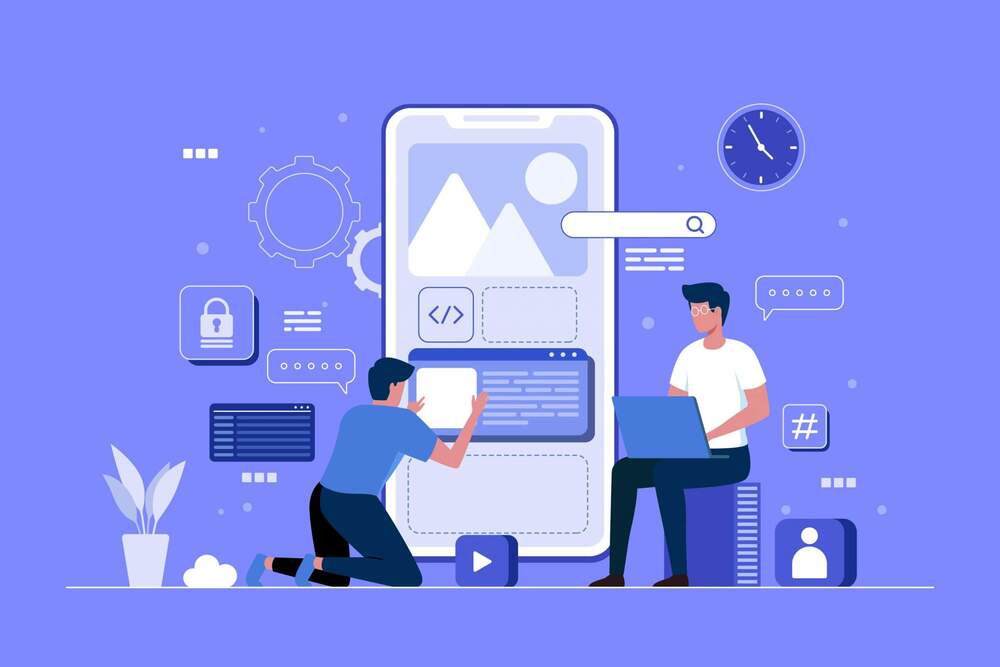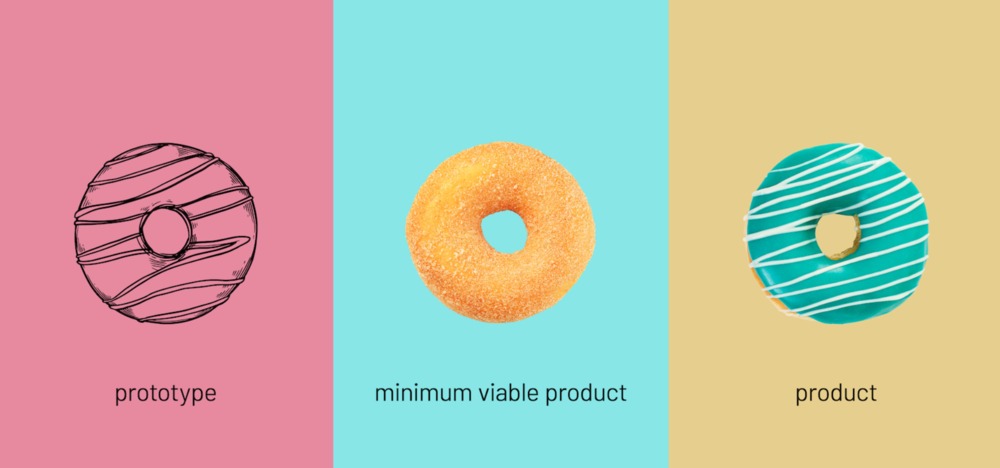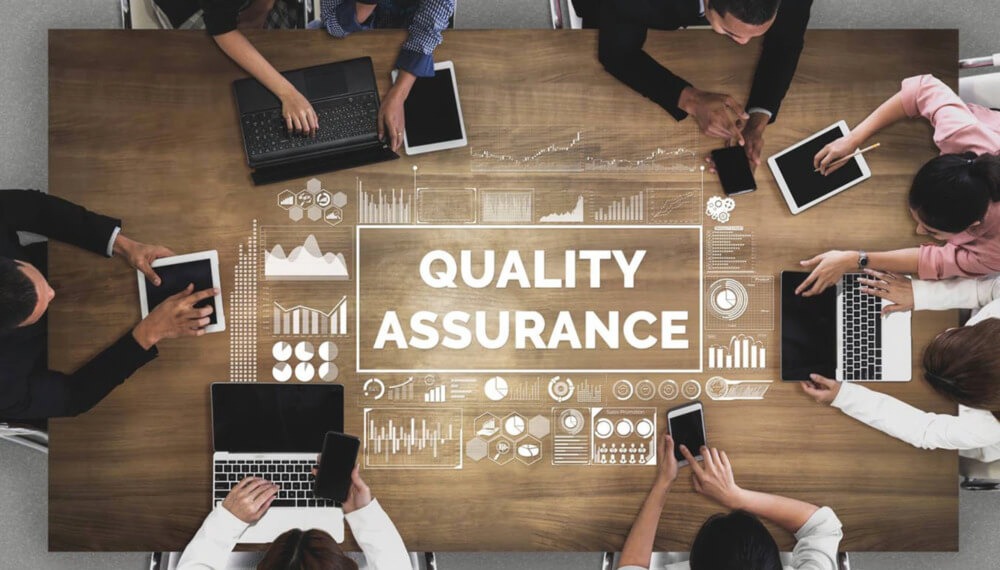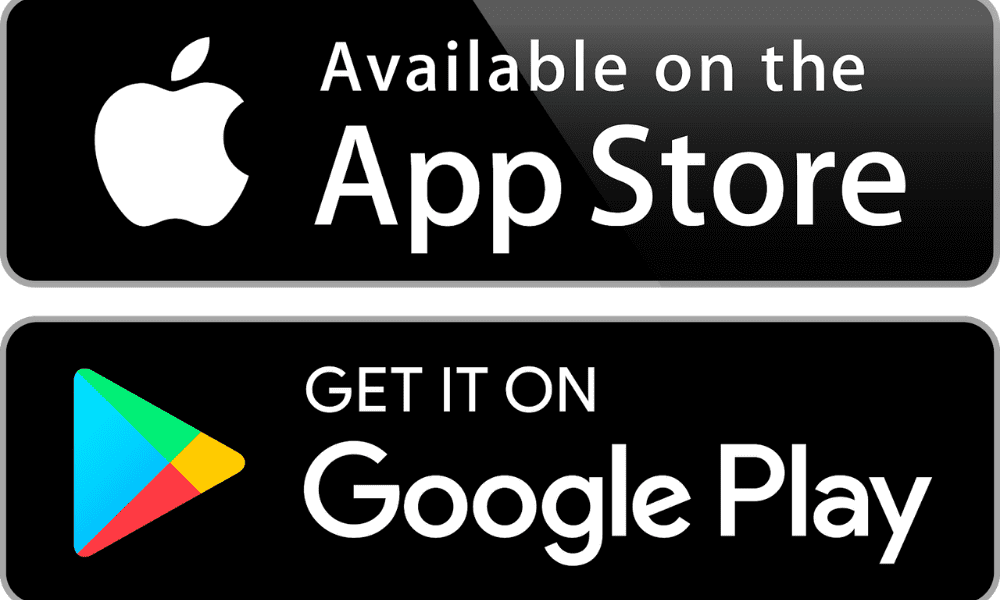- Overview of 9 Stages of the Mobile App Development Process
- STAGE 1. Finalize your business's ideas
- STAGE 2. Choose the best mobile app features
- STAGE 3. Choosing a Partner
- STAGE 4. NDA Signing
- STAGE 5. Product Discovery
- STAGE 6. UX / UI App Design
- STAGE 7. App Development with Quality Assurance Process
- STAGE 8. Preparation and Publishing
- STAGE 9. Post-development Phase
- Conclusion
How’s a mobile app created? Is the whole design and development process complicated and time-consuming? These common questions often come to mind when business owners plan to transfer their operations to mobile devices. In this article, we’ll detail seven stages of the mobile app development process that are widely applied by most present-day app developers.
Overview of 9 Stages of the Mobile App Development Process

Generally, there are no significant differences in making an app between IT service providers. The mobile app development process often includes seven fundamental steps as follows:
1. Finalize your business’s ideas
Develop a proper idea to go online based on your company’s objectives, requirements, and budgets.
2. Select a compatible app developer
Research, evaluate and finalize the most suitable IT outsourcing companies.
3. Product discovery
Specify your app’s usage purposes and end-users; accordingly, deduce which key features and functionality should be included in the deliverable. Decide on development team members in the app-building project and their responsibility. Concurrently, identify essential tech stacks and tools to build an app and closely connect those involved throughout the project.
4. UX/UI design
Determine your app’s appearance and how it works in the client terminal.
5. App development with quality assurance (QA)
Deploy the mobile app development plan based on the pre-identified project management method (e.g. Agile or Gantt chart). Code, modify, and test the app.
6. Preparation and publishing
Prepare essential materials in terms of marketing, privacy policies, and more before introducing the app to Google Play and Apple Store.
7. Post-development
Plan for maintenance and improvements based on end-user feedback and your company’s further growth.
FURTHER READING: |
1. What is Hybrid App Development? |
2. The Product Design Process: A 6-Step Guide |
3. An Overview of App Development Project Management |
STAGE 1. Finalize your business’s ideas
Mobile apps are considered “a new norm” in this digital era. But it doesn’t mean your company needs one unless this mobile-based product deals with the existing problems of the target audience and boosts the company’s overall development. Therefore, forming ideas to go online is the first crucial step; it accordingly mirrors your demands, ultimate goals, and benefits of building a mobile app.

One big question you should ask before developing a proper business idea is “What are the primary intentions behind a potential mobile app?” This question can be broken down into smaller chunks to help your company understand its current needs better:
- What are existing problems that impact lots of people (i.e. your business and target niche) and require a digital solution?
- Which unique values can a mobile app bring to end-users?
- Which opportunities and challenges show up provided your company goes mobile?
To a wider extent, you need to conduct market and competitor research to:
- Improve your understanding of the market and its current trends;
- Optimize your business opportunities and approach to potential customers;
- Analyze the pros and cons of your competitor’s mobile app to devise a suitable competitive strategy.
Beyond that, your business’s app idea should have original concepts instead of copying patterns or models of other successful counterparts. However, this idea should tally with your company’s culture and customers’ demands.
Recommended reading: Mobile App Design Process: How does it change in 2023?
STAGE 2. Choose the best mobile app features
With all the different types of apps out there, it can be tough to choose what features you need. If you need help deciding, here are a few questions that may help:
- What is your ultimate goal?
- Is this app just for business or personal use?
- Do you want to build an app that reaches a wide audience or one that’s only used by a small group of people?
- Is this app mostly text-based or will it have graphics and videos?
- How much money do you want to spend on this project? Are there any budget restrictions?
- Do you want to develop the app in-house or hire an outside company to develop it for you?

How to find the right features for your app?
There are many different types of apps out there, but what are you looking for?
A social app might include features like private messaging, a news feed, and the ability to follow others. A fitness app could include features like workout plans, step tracking, and progress reports.
As you choose potential features for your app, it’s important to keep in mind what you’re trying to accomplish with your app.
If you’re just looking for an easy way to order food next time you head out to dinner or get a taxi on your phone, then it’s best that you stick with simple features and don’t spend too much time thinking about the possibilities of your app. However, if you’re planning on taking your business to the next level and launching an app that will let customers track their orders from start to finish and reorder as they go along, then you should consider more complex features.
The point is finding the right feature set for your mobile app development process is key!
Example of an eCommerce mobile app’s features:
- Sign-up and login
- Onboarding
- Splash screen
- Navigation
- Image galleries
- Forms
- Social media integration
- Social Feeds
- Product menus
- Shopping carts and payments
- Loyalty cards
- Booking systems
- Calendar integrations
- Push notifications
- Native video
- Native maps
- Device hardware access
- App analytics
STAGE 3. Choosing a Partner
Two popular ways to create a mobile app are internal staffing and outsourcing. Your company can base a final decision on such crucial elements as the project’s complexity, budget, the in-house team’s expertise, and experience.

As for outsourcing, the biggest concerns are how to pick a suitable partner and whether the company is reliable and capable of building your required product.
If you don’t know where to start or even when you already know some so-called reputable companies through internal referrals, we still recommend you follow several steps below to guarantee a potential partner’s dependability:
- Browse through B2B review websites, typically Clutch.co, GoodFirms.co, and TheManifest.com to filter which vendor fulfills your initial requirements.
- Thoroughly read reviews from previous and existing clients as well as check a company’s portfolio to see:
- What types of industries the app developer has experience in working with;
- Whether the developer cooperates with startups or established companies;
- Whether the developer works with local or international clients;
- Which technologies and tools are used to make an app and enhance interactions between those involved;
- Which benefits and difficulties the developer’s client meets during the mobile app development process.
- Get consultancy with more than one vendor to:
- Evaluate their understanding of your business ideas;
- Compare their forecasts of your potential deliverable;
- Evaluate how they time each stage of the whole process (e.g. time for project execution or QA) and whether written codes are accessible and safely stored on code repository hosts (e.g. GitHub or GitLab);
- Assess their capability of anticipating unexpected events;
- Evaluate their communication and app development costs.
Once a partner is selected, your company and the vendor will negotiate an Independent Contract Agreement or a Service Level Agreement.
STAGE 4. NDA Signing
While you aren’t a lawyer, it’s important that you have an idea of what an NDA is. A non-disclosure agreement, or NDA, is a legal document that covers the details of your business or your app and how it will be operated. It protects confidential information from being leaked to any third party.
A non-disclosure agreement, or NDA, is a legal contract between two parties. It can be used in a variety of situations, from sharing sensitive information to protecting intellectual property. In the world of app development and coding, NDAs can protect the work of developers and designers. If you’re looking for an experienced and professional app developer and don’t know where to start, here are some things you need to know about app development NDA agreements.
To start off, you should determine the length of your NDA. For example, if your project requires 4 months for development and testing, then an 8-month NDA would be appropriate. If you need 1 year to complete the project, then an 18-month NDA would be necessary. The number of months or years required will depend on the complexity of your project and the amount of information that needs to be protected.
Once you have determined what type of NDA is essential for your project, consider who would be signing it.
- Will everyone involved with the project need to sign?
- Will just one person need to sign?
- How many people will each individual sign for?
- When does the signing take place?
All these questions can help you determine who needs what type of NDA and when they should sign them!
STAGE 5. Product Discovery
Sometimes a decent mobile app idea you obtained in Stage 1 doesn’t translate to a plausible mobile app. Therefore, at this phase, you should brief the outsourcing team on your company’s ideas so that they can have a better vision of your app.
With the professional support of the external development team, you may test the feasibility of your ideas. To do so, planning the development of a minimum viable product is essential. An MVP includes enough core functions to receive feedback from early customers. This helps you see whether your potential app will adapt to user demands and give a satisfying result.

During this stage, your business also finalizes a proper outsourcing model (i.e. Fixed Price, Time & Materials, or Team Augmentation) and essential materials for the development procedure before signing the mentioned contracts with the app developer at a pre-negotiated price. These contracts should clarify important clauses about:
- Types of service provided;
- Confidentiality: The app developer pledges not to reveal confidential and sensitive information of your business to unauthorized third parties;
- Intellectual property – Your company has intellectual property rights to all that is produced for your company;
- Advance payment;
- Responsibilities for each party;
- Deadlines for each sprint of the mobile app development process;
- Conditions to cancel contracts and more.
Right after confirming those engaged in the project and the start date, app design kick-off meetings are held remotely and in person. Accordingly, your company can establish rules, present ideas, and prepare for the next steps. Meanwhile, the IT service provider will introduce how the company executes work, who gets involved in the project, and set up communication tools.
STAGE 6. UX / UI App Design
UX (User Experience) and UI (User Interface) app designs play an important role in deciding how a mobile app works and looks. An intuitive layout and a flawless interface will provide end-users with positive experiences, accordingly boosting overall user satisfaction and retention rate.
At this phase, UX/UI designers and your company will build:
- A Customer Journey Map – visually analyze the user flow through your potential app, from discovering a certain product or service on the app to payments;
- UX design – build wireframes that include the structure, layout, and connections between features of the product. Design a Clickable Prototype that gives interactive experiences by stimulating a real app;
- UI design – build the easy-to-navigate interface, color themes, animations, and more. Your company, as a product owner, may observe how the app looks in reality through mockups and check motion design through videos.
Recommended reading: UX Design Process: What You Need To Know
STAGE 7. App Development with Quality Assurance Process

Coming to Stage 5, a development team is ready for the coding and testing phase. Depending on project management methodologies (e.g. Agile or Scrum), the mobile app development process can be divided into smaller phases that take place in an array of cycles until the product development is completed. For example, the below steps are typical and repetitive for the agile development process:
1. Planning
The development team and your company will have a meeting to build a product backlog that lists work necessarily conducted by team members in each iteration. So requirements for each task need to be clear and acceptable.
2. Development
Once all parties reach a consensus about crucial elements, UX/UI designers and developers will start their jobs at the client terminal and the back-end server. Development team members and your company can communicate via project management software (e.g. Basecamp or Nifty) to track the team’s progress and improve interactions between parties.
3. QA and QC testing
QA and QC testing is an essential step to check how the app’s features work or whether the app has any bugs. You and the development team can easily follow the testing progress through such software as QA Touch and Testlink.
The Quality Assurance Process is an act of preventing defects that arise during the product development process. Accordingly, QA specialists will frequently examine the procedure and make any changes to guarantee the app’s quality. Meanwhile, Quality Control (QC) engineers are responsible for correcting any mistake through manual and automated tests. These tests are also conducted on a wide range of devices and application development platforms.
4. Deployment and review
Features developed in each iteration will be presented to your company to see how they work and whether anything needs to change.
STAGE 8. Preparation and Publishing
As the first version of your app is completed, it’s time for beta testing. Particularly, end-users or external testers will try the app for the first time in a real-world environment.
When the product is ready for publishing on the App Store and Google Play Store, the app development company will help you prepare essential documents and materials to do so.

App Store
To submit products to the Apple Store, your company should follow the following steps:
- register for the Apple Developer Program;
- ensure your product complies with App Store guidelines;
- conduct beta testing for your app with TestFlight;
- log in to App Store Connect and provide basic information about your app (e.g. name, category, or pricing);
- upload your app’s screenshots;
- publish your app through Xcode.
Your app will be reviewed by Apple to ensure it suits the Apple Store’s rules.
You can use this guide for more detail https://developer.apple.com/ios/submit/
Google Play Store
To release Android apps to the Google Play Store, your company needs to provide the required information about the privacy policy or age/geographic restrictions. Marketing materials (i.e. screenshots or videos) and configuration requirements are important as well. For more details, you can read the article from Google Play: The Future of Android App Bundles here.
STAGE 9. Post-development Phase
After your app’s release, the development team will manage the product’s statistics, and user feedback and discover possible flaws. These tasks are vital for further app improvements and maintenance to keep your app attractive and scalable.
Conclusion
The mentioned stages of the mobile app development process are typical in most IT outsourcing companies, including Designveloper. These phases involve not only development teams but also clients in the procedure of creating an app. This helps clients give quicker feedback about work and make changes if needed. Also, it guarantees the product will be built successfully and on time.









